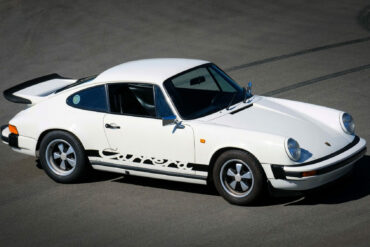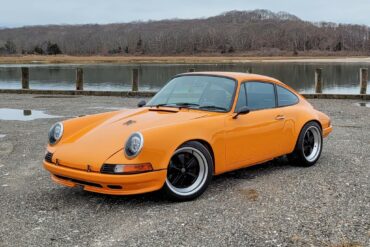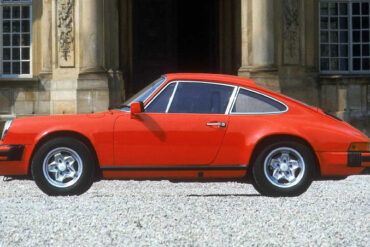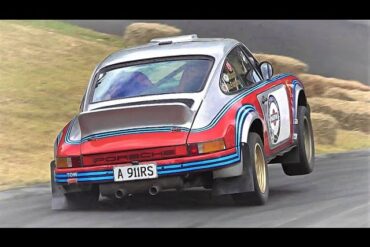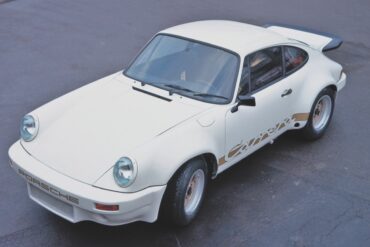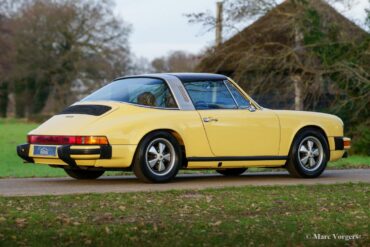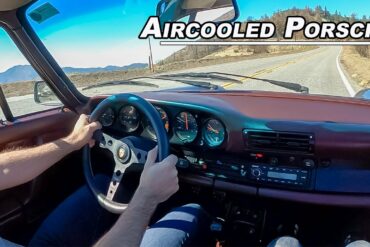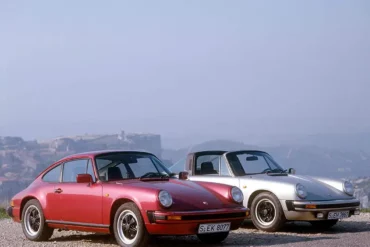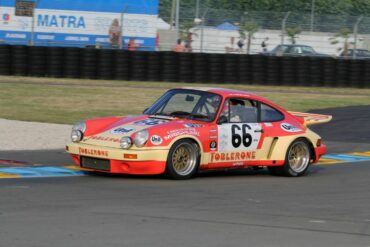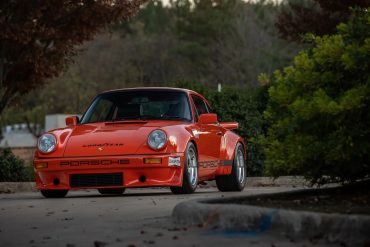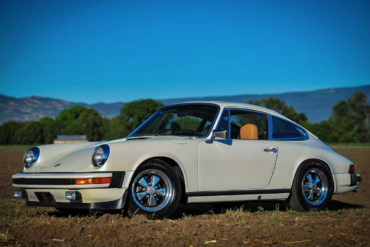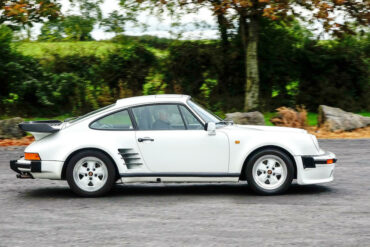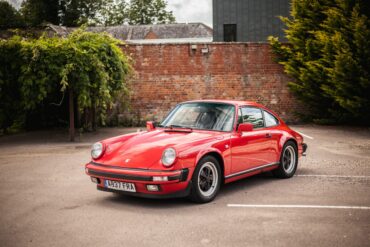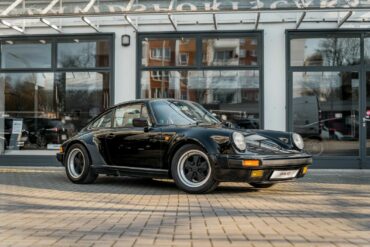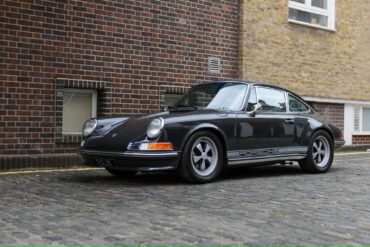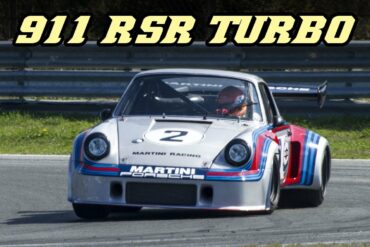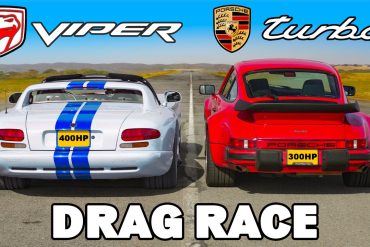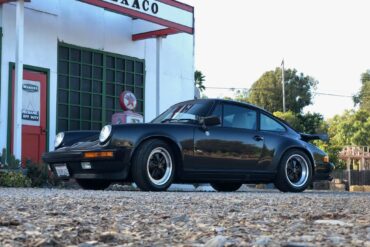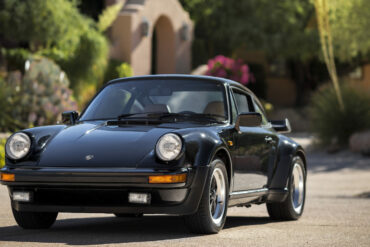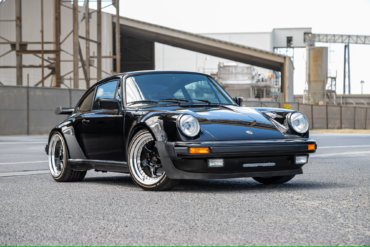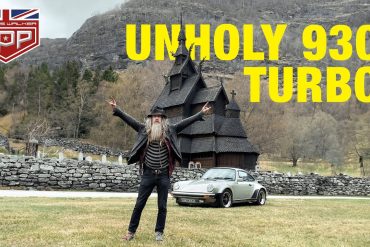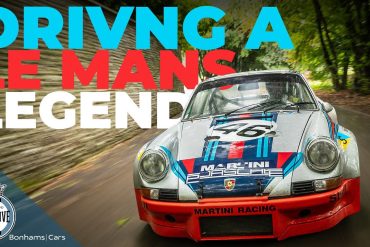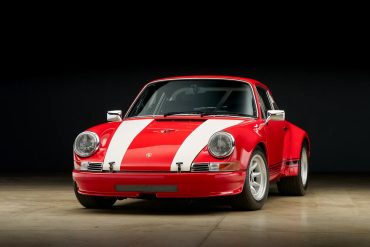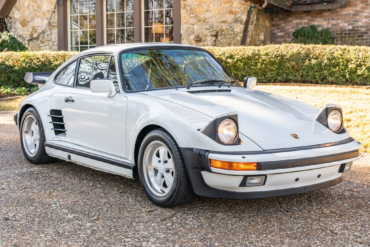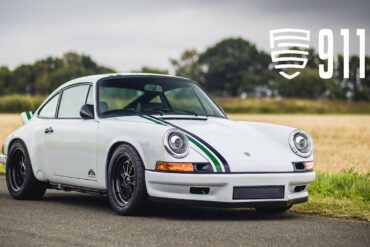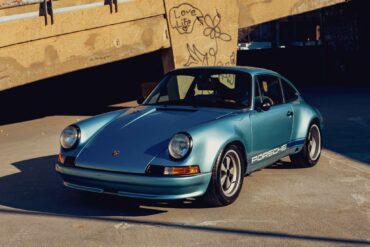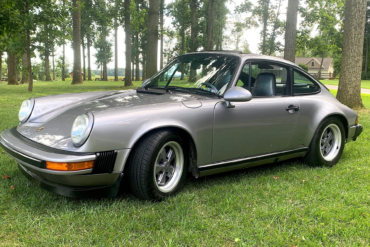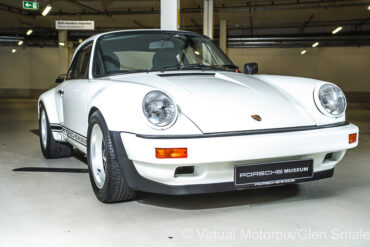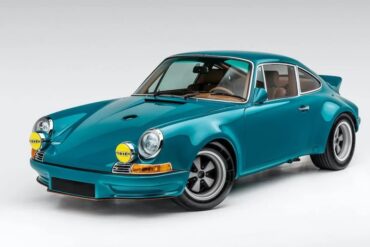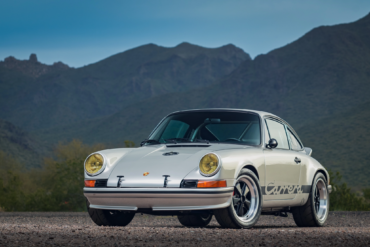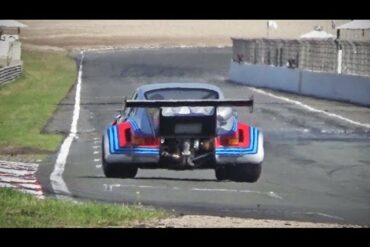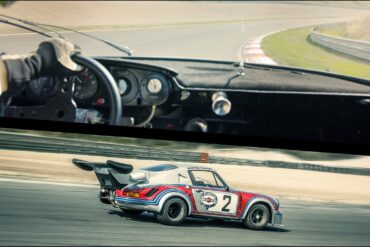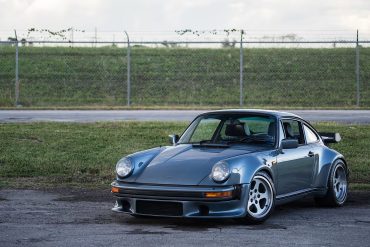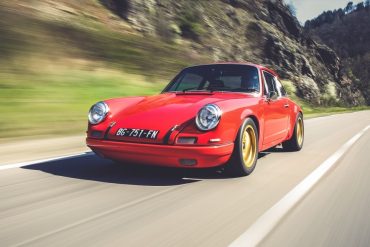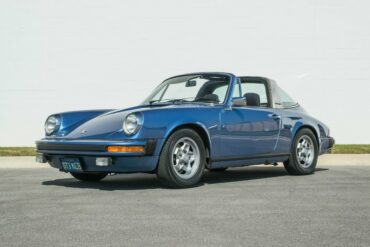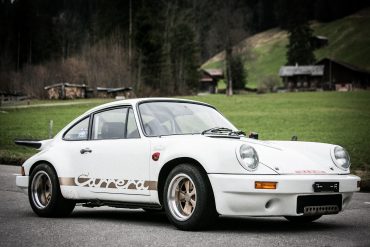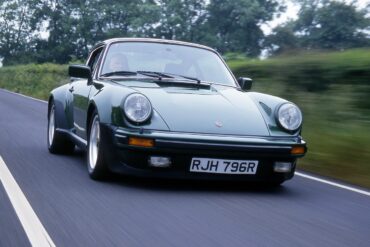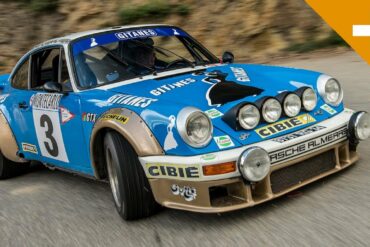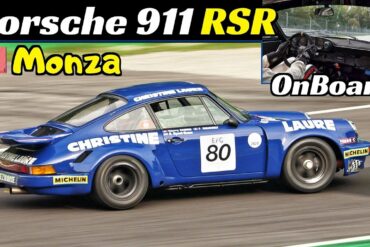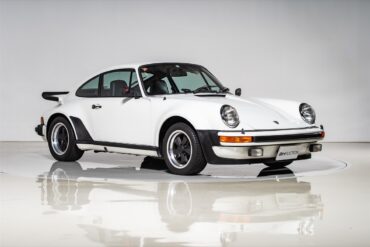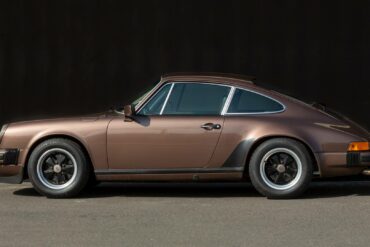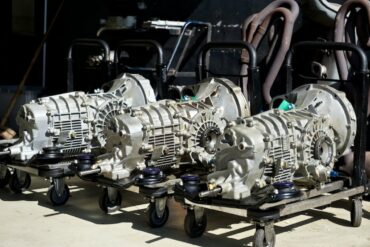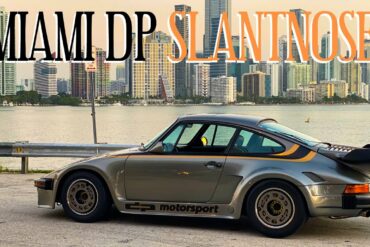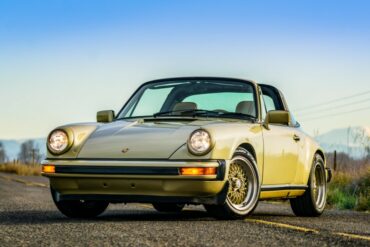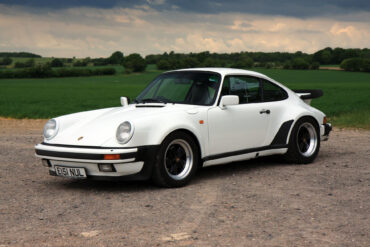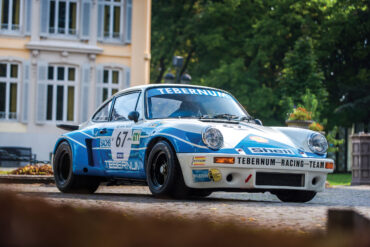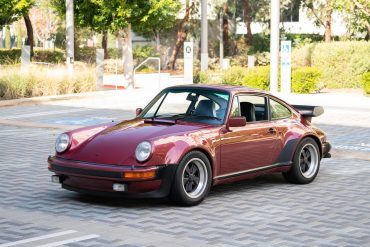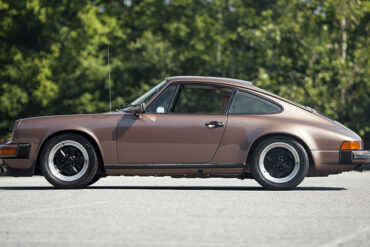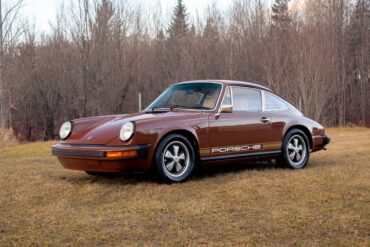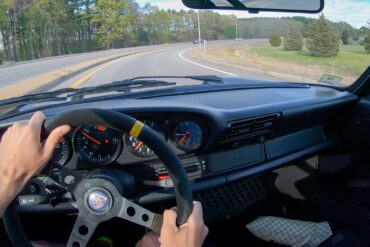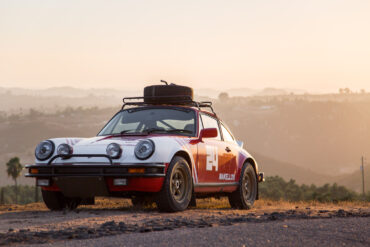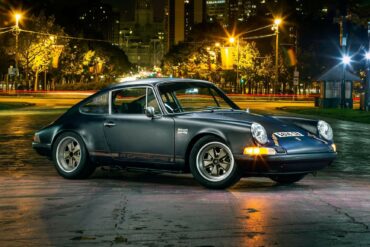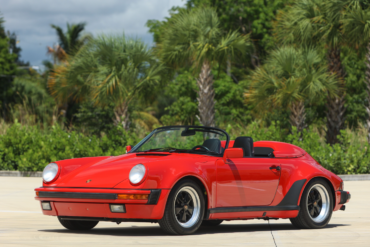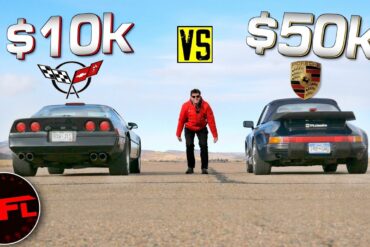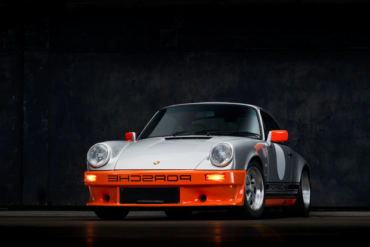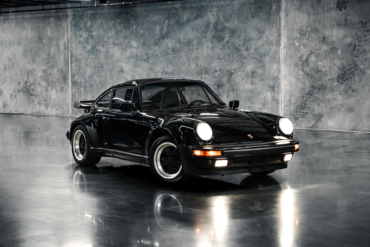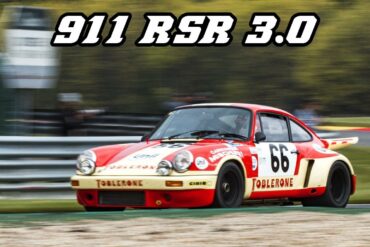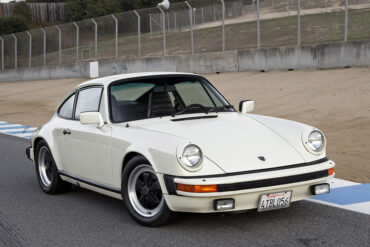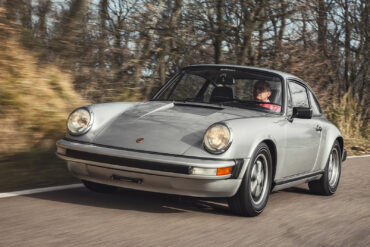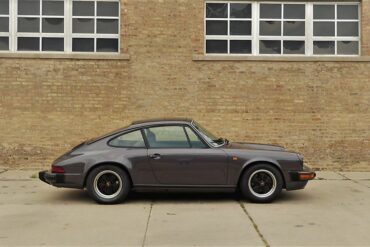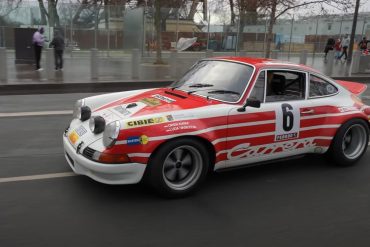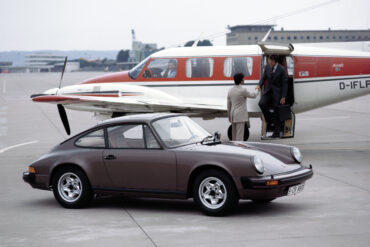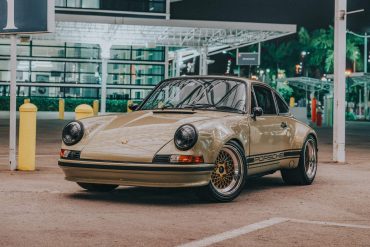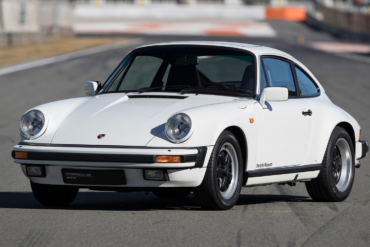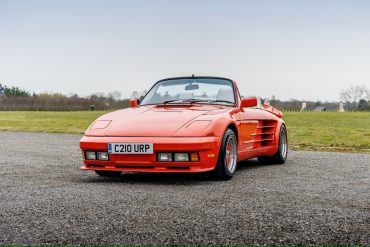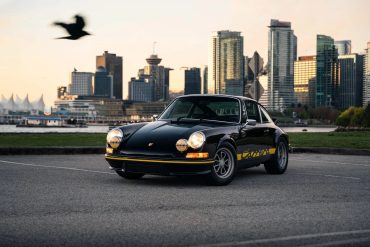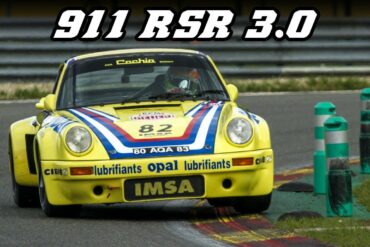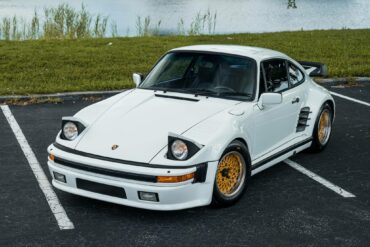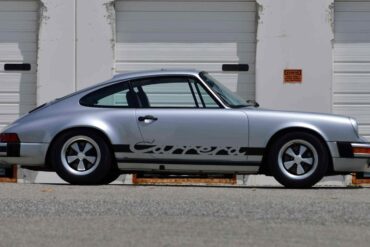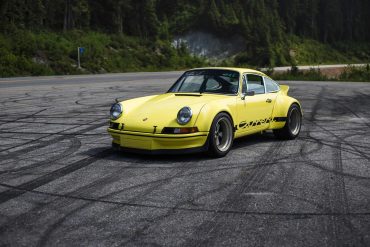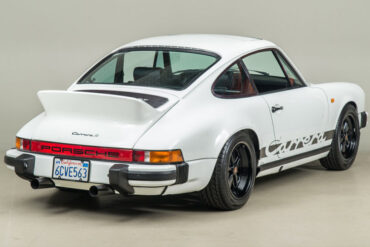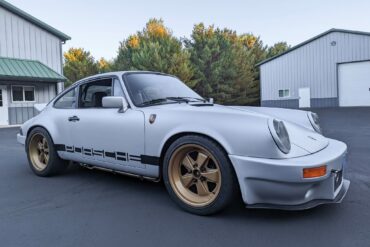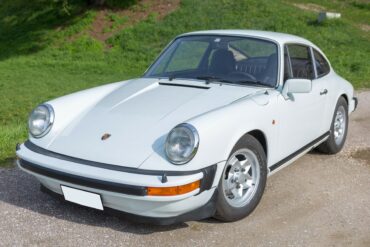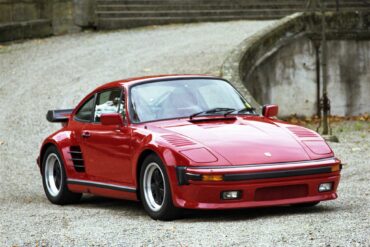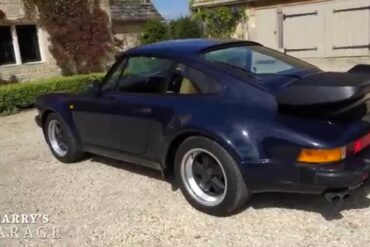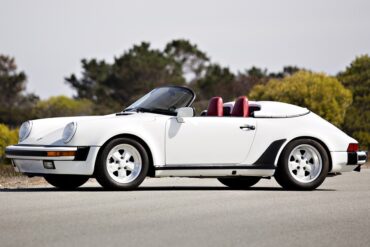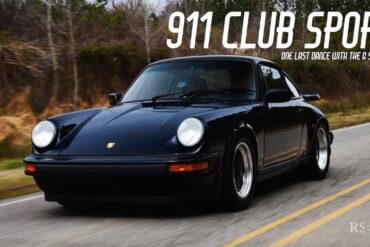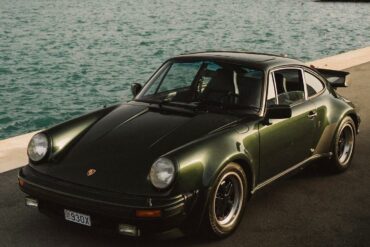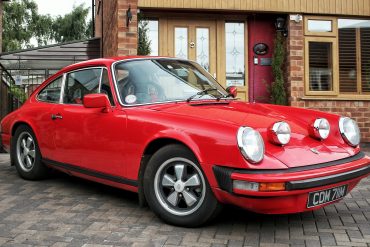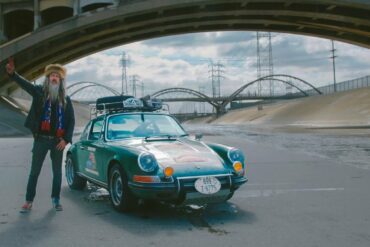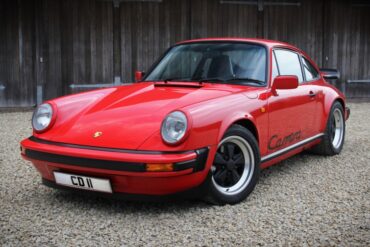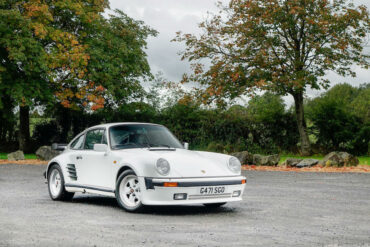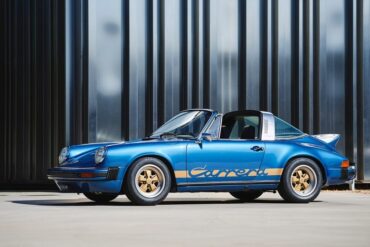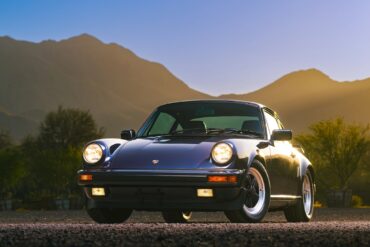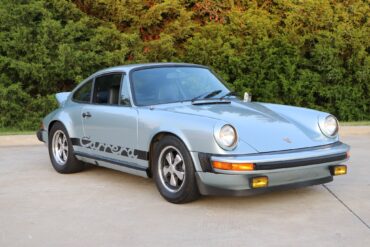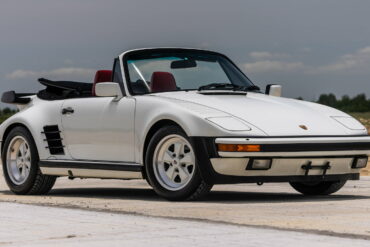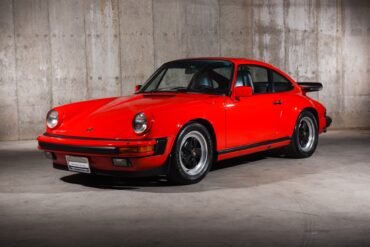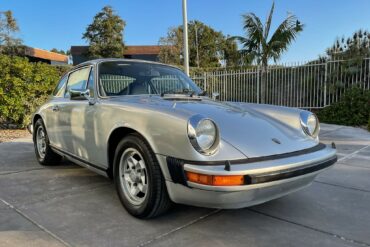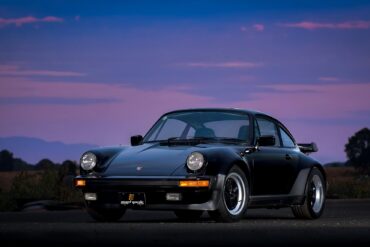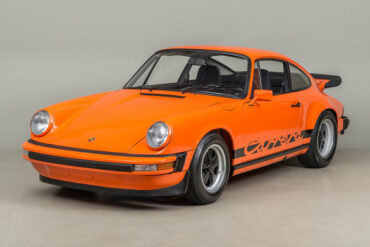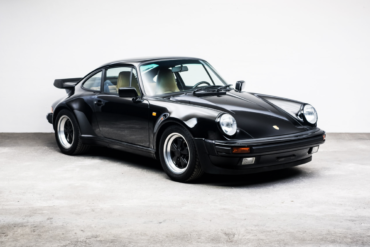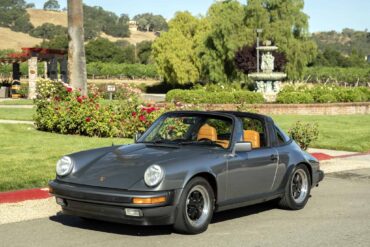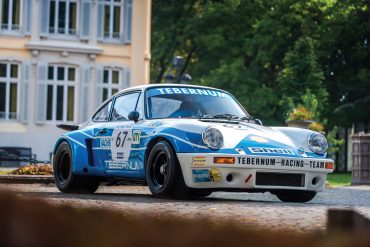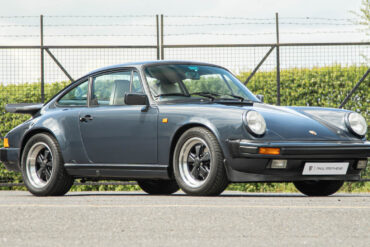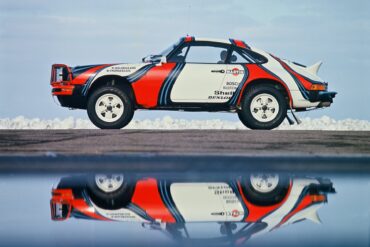1974 – 1976 Porsche 911 Carrera Coupe (MFI) Pictures & Gallery...
This 1981 Porsche 911SC Coupe underwent a custom backdate-style restoration that spared no expense on high-end equipment. The Coupe was...
Porsche 911 (G-Body) Paint Color Options This post outlines all the color options for the original G-Body generation Porsche 911...
Now That’s What I Call Driving This is Stuart McFarlane´s beautiful Porsche 911 SC Safari, a 1974 machine built to...
1974 Porsche 911 Carrera RS 3.0 Technical Specifications Engine 3.0L Aircooled Flat 6 Configuration Flat-6 Driven wheels Rear Engine / RWD...
1974 – 1977 Porsche 911 S 2.7 Targa Pictures & Gallery...
POV In A Great Sounding 911 GVBC is a car enthusiasts dream! Every Friday morning a group of dedicated drivers...
The 911 SC effectively replaced the 911 S and was one of Porsche's first models that was meant for the international market. It was sold as a cheaper alternative to the 911 Turbo. The SC used an unblown version the 930 Turbo unit that offered 180 to 200 bhp depending on model year. Options included the rear whale tail, front chin spoiler, Bilstein dampers, 16 inch wheels with Pirelli P7 tires and sports seats. Sometimes dealers lumped these options together to create their own sport package. It was available as a Coupe and Targa from 1978 - 1983, while the Cabriolet version was only available in 1983.
1974 – 1975 Porsche 911 Carrera RSR 3.0 Pictures & Gallery ...
This 1979 Porsche was originally a 930 Turbo coupe before it was transformed and modified into a 911 RSR Tribute...
1974 – 1977 Porsche 911 S 2.7 Technical Specifications Body Type 2+2 seater fixed-head coupé Number Of Doors 2 Wheelbase...
1989 Porsche 911 Turbo LE Pictures & Gallery...
1984-1989 Porsche 911 Carrera 3.2 Coupe Pictures & Gallery ...
Porsche introduced a new wide-body package option. Known as the M491 option it was commonly known as the "Turbo-Look". It gave the naturally aspirated cars the look and style of the 930 Turbo with wide wheel arches and the distinctive "tea tray" tail. It wasn't just about looks however, because M491 also got you the stiffer suspension shared with the Turbo and the superior Turbo braking system as well as the wider Turbo wheels. It was available on the Coupe, Cab and Targa.
Retro Works has restored a 1984 Porsche 911 by merging the design of a 1973 classic with a newer Carrera...
Porsche 911 Carrera RSR Turbo 2.1 On Track This is a 911 that wrote a big part of Porsche history....
In a head-to-head competition presented by carwow, two classic cars, the 1986 Porsche 930 Turbo and the 1992 Dodge Viper,...
For 1989, Porsche produced the 25th Anniversary Special Edition model to mark the 25th year of 911 production. The 1989 Porsche brochure lists production of 500 U.S. market cars, of which 300 were coupés (240 in silver metallic paint and 60 in satin black metallic), and 200 cabriolet models (160 in silver and 40 in black). All had "silk grey" leather with black accent piping and silk grey velour carpeting. Includes small bronze "25th Anniversary Special Edition" badges.
Porsche Option Codes – Porsche 911 (1981 Model Year) Looking to decode your 1981 Porsche 911 option codes? Want to...
Collecting Cars is proud to offer a striking example of a 1978 Porsche 911 3.0 SC featuring an all-black colour...
When Magnus Walker was invited to Fjord Lift event in Norway he quickly took the chance to drive a remarkable...
The Carrera RSR 3.0 is one of those rare and super-special Porsches, and one of the most successful Group 4...
This 1979 Porsche 911SC coupe was modified using a backdated bodywork along with a long-hood conversion, S/T-style decklid, bumpers, and...
If you head over to Bring A Trailer now, you’ll have the chance to acquire one of the reported 33...
The Ultimate Restomod? Paul Stephens has been restomodding classic Porsche 911s for years. The Le Mans Classic Clubsport is his...
This 1982 Porsche 911SC Coupe has undergone various upgrades and modifications. The car’s bodywork has been backdated with 911ST-style fender...
In 1988, Porsche unveiled the “Commemorative Edition” Carrera (also called the Jubilee Edition) to celebration the 250,000th 911. Porsche built...
Built so that the factory Rothmans Porsche Rally Team could hit the international stage, the SC RS used the Turbo’s body with fibreglass bumpers and aluminium doors. In Autumn 1983, Porsche presents the 911 SC/RS for motor racing. The engine originates from the 911 SC, with improved performance achieved by the mechanical ball fuel injection, increased compression, the cylinder heads from the 935 and forged pistons. Racing seats are fitted in place of the standard seats.
This 1975 Porsche 911S was customized by Patrick Motorsports of Phoenix, Arizona with a range of modifications, including widened steel...
This 1984 Porsche 911 Carrera coupe was backdated with a twin-plug 3.4L flat-six around 2015 and painted in silver with...
Carrera RSR Turbo On Track Fun At this year’s Historic Grand Prix I was lucky enough to capture this 1974...
Best On Track POV Video I’ve Ever Seen This Porsche 911 Carrera RSR being hammered on-track is the stuff of...
In the mid-1980s, RUF-manufactured Porsches stood out as some of the swiftest cars globally. In top-speed assessments by “Road &...
The MR12 Force Rouge, created by Machine Revival, embodies the spirit of the cafe racer design and is built for...
Porsche Option Codes – Porsche 911 (1974 Model Year) Looking to decode your 1974 Porsche 911 option codes? Want to...
1974 Porsche 911 Carrera RS 3.0 Pictures & Gallery...
1975 -1977 Porsche 911 Turbo 3.0 (930) Technical Specifications Type Series Production Car Production Years 1974 – 1979 Built At...
Passenger Ride In a Porsche 911 SC Henry Catchpole recently found himself in the passenger seat of the 1978 Monte...
Porsche 911 Carrera RSR (1974) by Historika – Monza Historic 2020 + OnBoard, 3-Litre Flat-Six Sound! This great and original...
1984-1989 Porsche 911 Carrera 3.2 Cabriolet Pictures & Gallery...
Porsche Option Codes – Porsche 911 (1976 Model Year) Looking to decode your 1976 Porsche 911 option codes? Want to...
1976-1977 Porsche 911 Carrera 3.0 Coupe Pictures & Gallery ...
Porsche 911 (G-Series) Transmission Codes The transmission number code is found on the transmission data plate. Transmission codes 911/912 G-model...
The 1988 Porsche 911 Carrera underwent a backdating process and received an RWB widebody kit by Porsche tuner Akira Nakai....
In Magnus Walker’s newest video, he gets to drive a 1982 930 Slantnose Turbo by DP Motorsport formerly owned infamous...
Commemorating 25 years of Porsche sports car production, the 911S Silver Anniversary Edition is distinguished by unique Diamond Silver Metallic paint and a special black leatherette and tweed interior. The first of Porsche’s commemorative ‘celebration’ cars, this Silver Anniversary was produced in a limited run of 1,063 examples, of which approximately 500 are reported to have made their way to the United States.
Porsche Option Codes – Porsche 911 (1988 Model Year) Looking to decode your 1988 Porsche 911 option codes? Want to...
For the 1974 racing season 911 Carrera RSR 3.0 (246 kW) and RSR Turbo 2.1 (338+ kW) were created - the 3.0L for the customer teams and the 2.1 turbo for Porsche’s own team. The Carrera RSR 3.0 was made in small numbers for racing. The 3.0 RSR would go on to become the most successful Group 4 racing car of its time thanks to its combination of low weight, immense Porsche 917 brakes, impeccable handling, and a 330+hp naturally aspirated flat-6.
Porsche introduced the 930 Turbo in 1975, pairing a KKK turbocharger with the 3.0-liter Carrera RSR engine in road trim,...
1978-1983 Porsche 911 SC Coupe Pictures & Gallery...
1974 – 1977 Porsche 911 2.7 Coupe Pictures & Gallery...
911 3.2 Carrera POV Run Onramps and Highway driving in my Aircooled 1988 Porsche 911 3.2 Carrera. Be sure to...
A True Head Turner We included a car from Makellos Classics in a list of our favorite Porsche custom cars...
ROCS Motorsports reimagined a 1984 Porsche 911 Carrera Coupe with a custom backdate restoration between 2020 and 2021. The “Philadelphia...
The Porsche 911 Carrera Speedster launched in 1989 as a one-year special. It had a frameless, raked windshield that was...
The Porsche 911 Carrera 3.2 was produced for model years 1984 to 1989. If you are looking to get into...
Originally built by German tuner Gemballa, the Avalanche was more than just a cosmetic upgrade. Boasting a powerful single-turbo engine...
Introduced in 1963, the Porsche 911 was initially designed as a lightweight, low-power finesse car. However, in 1975, Porsche launched...
For 1989, Porsche produced the 25th Anniversary Special Edition model to mark the 25th year of 911 production. The 1989...
Bid to get the chance to acquire a 1987 Porsche 911 Turbo Coupe at auction with Bring a Trailer! With...
Straight exhaust fly-by’s & downshifts Is there anything better than watching (and listening) to an aircooled RSR 3.0 hammering on...
Porsche Option Codes – Porsche 911 (1978 Model Year) Looking to decode your 1978 Porsche 911 option codes? Want to...
The base model Porsche 911, along with the 2.7 Liter 911S and Carrera 2.7, was introduced for the 1974 model year with many significant changes to meet legislative requirements around the world for both impact safety and emissions. It was available in Coupe and Targa variants, sporting engine Type 911/92 with K-Jetronic fuel injection, rated at 150 hp. For the 1975, the base model was discontinued in North America. ROW got Coupe and Targa variants, featuring engine Type 911/41 rated at 150 hp.
1978 – 1983 Porsche 911 SC Coupe Technical Specifications Type Series Production Car Production Years 1978 – 1983 Built At Stuttgart,...
The Carrera RSR 3.0 stands as a rare gem among Porsches, renowned as one of the most triumphant Group 4...
As a successor to the Carrera 2.7 MFI, the Carrera 3.0 was fitted with a variation of the 930's engine without a Turbo. During its production period only 3,687 cars were made. The Carrera 3.0 was replaced by the Porsche 911 SC for model year 1978. Between 1976 and 1977, Porsche introduced the Carrera 3.0 with wide rear flares, optional whale-tail, and other luxury options. Built before the ‘911 SC’ it has everything the SC has, and more. It’s a different drive with more power @200bhp; more torque @188 ft/lb @4200rpm and it was 10% lighter too.
This 1979 Porsche 911SC pays homage to the iconic 911 RSR and ST racing cars with a meticulous restoration and...
Porsche Option Codes – Porsche 911 (1984 Model Year) Looking to decode your 1984 Porsche 911 option codes? Want to...
The Gemballa Cyrrus, based on the Porsche 911 Carrera 3.2 Cabriolet, debuted in 1986 and immediately captivated the everyone’s attention,...
This 1978 Porsche 911 SC coupe was transformed into the style of a 1973 Carrera RS lightweight model during a...
Great sound, great engine! Filmed at Circuit Spa-Francorchamps, Zolder and the Nürburgring between 2011-2017. Great compilation of on-track fun in...
Our friends from PCarMarket is currently offering this 1985 Porsche 930 Turbo Slant Nose “Special Wishes” for sale with approximately...
1974 – 1975 Porsche 911 Carrera Coupe Pictures & Gallery...
In 2015, famed tuner Akira Nakai of RWB Los Angeles transformed this 1987 Porsche 911 Carrera coupe. The car boasts...
1965 – 1989 Porsche VIN Numbers Porsche used a variety of chassis and VIN numbering systems until 1981, when a...
This 1979 Porsche 911SC has received some modifications, such as adding IROC/RS body styling, an upgraded suspension, custom interior, gold...
Production of the second generation 911 started in August 1973. The 1974 model year G-series derivative replaced the outgoing 1973 model year F-series. Visually, the new 911 was given a major facelift and all three production variants now came with fuel-injected 2.7-litre engines. The entry level 911 had 150bhp, the mid-range 911 S offered 175bhp and the flagship 911 Carrera came with 210bhp. Once again, customers were given the choice of either Coupe or Targa body styles.
Slantnosed and based on that of the 935 racecars, with pop-up headlamps. The front spoiler was made deeper in order to accommodate the extra oil cooler, while intakes in the rear wings fed air to the brakes. The larger turbocharger and four-outlet exhaust gave 30bhp of extra power. Porsche began their “special order program” offering a Flachbau option (Slantnose) for the 930 in very limited production. All of this at a cost of nearly 2 times the standard 930S.
A Legend Reviews A Legendary Car...
1989 Porsche 911 Speedster Pictures & Gallery...
Charles and Tim – One last dance with the G series. This is a great review of the 911 ClubSport....
The 930 Turbo with its 3.0 L turbocharged flat 6 was the fastest production car in the world at the...
1974 – 1977 Porsche 911 2.7 Technical Specifications Body Type 2+2 seater fixed-head coupé Number Of Doors 2 Dimensions &...
Magnus Walker showcases a 1986 Porsche 911 modified to resemble a vintage 1970s sports car with almost 350,000 miles on...
1987 – 1989 Porsche 911 Carrera 3.2 CS Pictures & Gallery...
Only 50 units made. The 911 Turbo Limited Edition comes equipped with the 330 bhp power unit normally only available in the 911 Turbo with Sport Equipment. In addition, the fitment of a limited slip differential as standard ensures the the increased engine performance can be used to it’s fullest extent. This Limited Edition also adopts the rear wheel air intakes of the Sport Equipment version. Essentially an SE without a slantnose front.
1974 – 1976 Porsche 911 Carrera 2.7 (MFI) Targa Pictures & Gallery...
For decades, Porsche has been renowned for its focus on performance in the automotive industry. One of its top models,...
In 1974, Porsche's performance version of the 911 was simply known as the 911 Carrera. It had new bumpers that complied to American regulations and the 2.7-liter engine from the Carrera RS 2.7. Other new features for 1974 included new seats, a full-width rear taillight. The Carrera deleted all the chrome off the car in favor of black window frames, wipers, doorhandles, but chrome could be ordered as an option. In 1976 Porsche replaced the Carrera with a new 3.0 liter variant.
Live now on Mecum Auctions is perhaps one of the most popular Porsches of the 1980s, a beautiful 1987 Porsche...
Porsche Option Codes – Porsche 911 (1986 Model Year) Looking to decode your 1986 Porsche 911 option codes? Want to...
In 1973, Porsche introduced the legendary 911 RS in response to the realization that the weight of its top-tier 2.4-liter...
Commemorating 25 years of Porsche sports car production, the 911S Silver Anniversary Edition is distinguished by unique Diamond Silver Metallic paint and a special black leatherette and tweed interior. The first of Porsche’s commemorative ‘celebration’ cars, this Silver Anniversary was produced in a limited run of 1,063 examples, of which approximately 500 are reported to have made their way to the United States.
The turbocharged 930 was produced from early 1975 was Porsche’s flagship 911 and arguably the most capable supercar of its...
1974 – 1976 Porsche 911 Carrera MFI Technical Specifications Production Years 1974 – 1976 Built At Stutgart, Germany Production 1647...
Porsche Option Codes – Porsche 911 (1989 Model Year) Looking to decode your 1989 Porsche 911 option codes? Want to...
1978 – 1983 Porsche 911 SC Targa Technical Specifications Type Series Production Car Built At Stuttgart, Germany Price $ $34,450...
The Carrera RSR 3.0 is one of those rare and super-special Porsches, and one of the most successful Group 4...
The replacement for the SC series came in 1984 as the 911 3.2 Carrera, reviving the Carrera name for the first time since 1977. This was the last iteration in the original 911 series, with all subsequent models featuring new body styling and new brake, electronic, and suspension technologies. Almost the same galvanised body as the SC. Engine was claimed to be 80 per cent new, and the first production 911 to feature an ECU to control the ignition and fuel systems.
In 1978, the works team fields two 911 SC at the East African Safari Rally. The name of game is to survive 5,000 kilometres of the toughest tracks in sweltering heat and torrential rain. The conditions take their toll: of the 72 starters, 13 reach the finish line. Martini Racing Porsche System Engineering signs on two specialists to drive: Sweden’s Björn Waldegård (Start No. 5) and Kenyan Vic Preston Jnr (Start No. 14).


